- All
Types of Refrigerated Shipping Containers
The refrigerated shipping containers also referred to as reefers, are used to transport temperature-sensitive goods over long distances. These containers can maintain a consistent temperature inside.
The market is currently filled with a wide range of refrigerated units. Depending on their state, the necessary level of efficiency, and the load they must transport, these containers vary. Three primary varieties of reefer units are in use:
Closed Reefer Containers - Closed reefers, the most popular type of reefer container, feature an integrated heating and cooling system as well as an integral front wall.
Modified/Controlled Atmosphere (MA/CA) Containers - When compared to closed reefers, these container units have enhanced insulation. The interior environment of the MA/CA reefer container can be kept constant during the shipping voyage.
Automatic Fresh Air Management (AFAM) Containers - These are extremely advanced reefer containers that regulate the fresh air exchange rate using a variety of sensors. Similar to MA/CA reefers, AFAM reefer containers help increase the shelf life of the products by precisely controlling the levels of carbon dioxide and oxygen.
The two common container sizes are 40 feet and 20 feet, and we can assist you in determining which length best meets your requirements.

20' Refrigerated Container
The refrigerated container, sometimes referred to as a reefer or freezer container, is made for the economical transportation and storage of items that require a temperature-controlled option.
CMG’s standard-sized cold storage container for the transportation and storage of temperature-controlled items, such as food and drink, flowers, or prescription drugs, is the 20-foot ISO refrigerated container.
The arrangement of the 20' refrigerated storage container unit ensures that its external dimensions comply with ISO guidelines, allowing it to fit, for instance, into container ship cell guides. Internal volume and payload are lost when an integral refrigeration unit is present.
Products that need to be transported at a consistent temperature above or below freezing point are placed in refrigerators. In accordance with the designated transport temperature, these items are separated into chilled and frozen categories.
In general, they consist of dairy products like butter and cheese, fruit, vegetables, and meat.
Integral units must be connected to the on-board power supply system when being transported by ship. The maximum quantity of chilled containers that can be linked is determined by the power supply system's capacity on the vessel.
In the event that the capacity mentioned above is insufficient to enable the transportation of refrigerated containers, power packs that have comparatively large diesel generators and meet ISO requirements for 20' container dimensions might be utilized.
The containers are linked to the terminal's power supply system while they are there. The majority of integral unit refrigeration units are powered by a generator set when being transported by rail and vehicle. This could be connected to the refrigeration unit or be a part of the refrigeration unit itself.
The container allows air to pass through it from bottom to top. The warm air is typically removed from the container's interior, cooled in the refrigeration unit, and then blown back in as cold air.
There are gratings on the floor to guarantee that the cold air is circulated sufficiently. Pallets create a useful air flow channel by adding extra space between the cargo container floors. Furthermore, the container's side walls are corrugated, which guarantees adequate airflow there as well.
On-site storage options are also provided by reefers. Used 20-foot refrigerated containers can serve as ambient temperature-controlled stores or as incredibly affordable walk-in refrigerators and freezers.

40' Refrigerated Container
The largest independent refrigeration shipping container we have available for moving or storing temperature-sensitive items. CMG’s largest capacity ISO container, measuring 40 feet, is available for purchase. It can be used to store and transport temperature-controlled items, such as food or medications.
A 40-foot reefer container is a type of intermodal shipping container that is specifically made to handle temperature-sensitive cargo. Perishable foods like meat and frozen goods, non-foods like cut flowers that must stay fresh, and medical supplies like vaccines that must be kept in cold storage are all common components of cargo.
Reefers have a precise temperature setting that can be as low as -40 degrees Celsius, and they are carefully regulated and observed while being transported.
If there is a problem with the temperature, an alarm goes off. The 40-foot reefer container has air curtains at the entrance, steel or aluminum lining, and hermetic sealing drains at each corner for effortless cleaning.
Proper space, a minimum of 12 cm, must also be allowed for air circulation in the upper section of the container. In order to accomplish this, enough room must be left above the cargo when the container is being packed. Labels on the side walls indicate the maximum load height. Along with properly designed packaging, cargo must be stowed in a sensible manner to guarantee vertical air flow from bottom to top.
In addition to controlling temperature, integral units also enable controlled fresh air exchange, which is useful, for instance, when transporting fruits and needing to remove metabolic products like ethylene and CO2.
We provide our customers with the greatest options for use with our 40-foot refrigerated container. This container offers ample storage space and security for long-distance transportation of both fresh and frozen goods.
The refrigeration system is weatherproof and dependable. The temperature sensitive can be adjusted to suit your needs and the tasks at hand. Our clients occasionally require a reefer container for a long-term, on-site solution.
In this instance, we can provide retired 40′ refrigerated containers. For more information on all the shipping containers we sell and the options for customizing your container, give one of our friendly sales representatives a call.
The Features of Refrigerated Shipping Containers
To find out more about the features that set refrigerated shipping containers apart, look through the extensive list below:
Material - Corten steel is typically used in the construction of refrigerated shipping containers.
Temperature - It is possible to regulate temperatures in refrigerated containers between -30°C and +30°C. Reefers, as opposed to ordinary shipping containers, are equipped with the refrigeration systems required to hold frozen and perishable items. These are tested to see if they keep the temperature.
Power - For refrigeration purposes, a reefer container needs an external power source. For maritime transportation, the majority of containers are able to receive electrical power from the ship. The diesel generators also referred to as gen sets, that power cold storage units on land. Typically, high voltage three power electrical service is required.
Refrigerant - Reefers rely on a thermodynamic mechanism called the vapor-compression cycle, just like refrigerators do. Certain parts, such as a compressor, condenser, evaporator, and expansion valve, are central to the operation.
Size - Twenty-foot units are the most common size for reefers to be found. However, they are accessible in various sizes. There are also forty-foot units available. Accommodations for high cubes are also feasible.
Insulated Walls - These refrigeration units' walls are essentially sandwiched between stainless steel panels that are situated on either side of the insulation. Reefer containers require that electrical outlets and plumbing fixtures be mounted on the walls, even though standard cargo containers have these lines hidden within the interior walls.
Aluminum Floors - The floors of refrigerator containers are made of aluminum, as opposed to the smooth metal or plywood of traditional containers. The flooring system that contains this material has a T-shaped profile. In order to allow cold air to flow underneath, this design keeps the contents of the container elevated.
How cold is a refrigerated container?
Goods that require temperature control during shipping are placed in refrigerated containers. Refrigerator units that are installed in reefer containers are powered by the ship's power supply.
Fruits and vegetables, meat, fresh or frozen fish, milk and dairy products, flowers, medications, juice, and chocolate are among the items that are frequently transported in reefer containers.
Temperature, ventilation, humidity, and drainage are the four parameters that need to be taken into account when shipping reefer cargo.
The construction of all standard reefer containers is to keep the cargo chilled and frozen at a temperature between +30°C and -30°C.
A certain proportion of the world's reefer fleet can also sustain temperatures as low as -35°C. Up to -70° C can be maintained in special containers, also known as super freezers. The ideal transport temperature depends on the cargo being transported.
Air must constantly circulate through the cargo to eliminate heat and gases to maintain a chilled temperature. As a result, ventilation should be included in the transport boxes. Fruits and vegetables require ventilation with fresh air. The cargo must have airflow surrounding it if it is frozen.
The cargo, the walls, and the cargo itself cannot have any significant gaps. Blocks should be used to store the cargo.
A reefer unit's dehumidification feature can reduce the air's moisture content. Relative humidity (RH) typically ranges from 60% to 85%, though some more recent models can reach 50%. Excess water that may build up inside the containers is released via drains.
The purpose of a refrigeration unit is to keep a load at a specific temperature, not to raise it to the desired level. To ensure good quality and the longest possible shelf life, it is essential to lower the temperature after harvest to the ideal transport temperature, especially for fresh fruits and vegetables.












